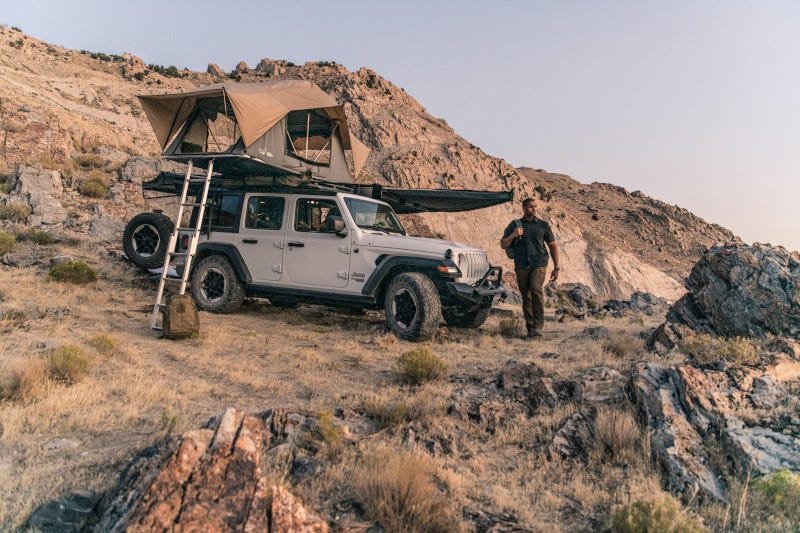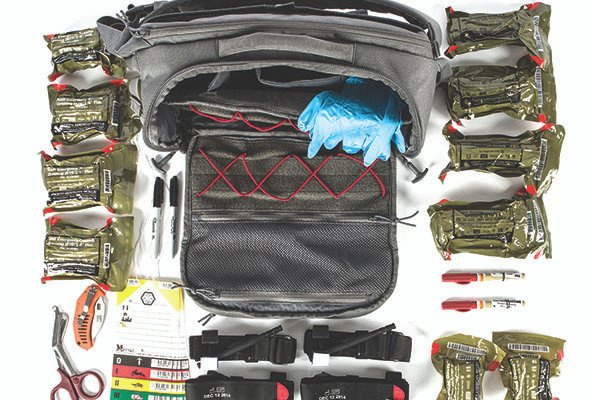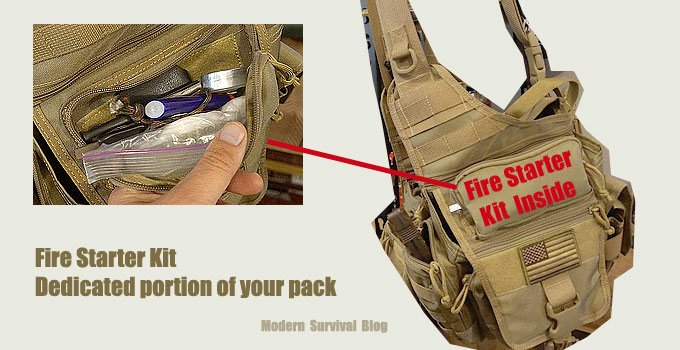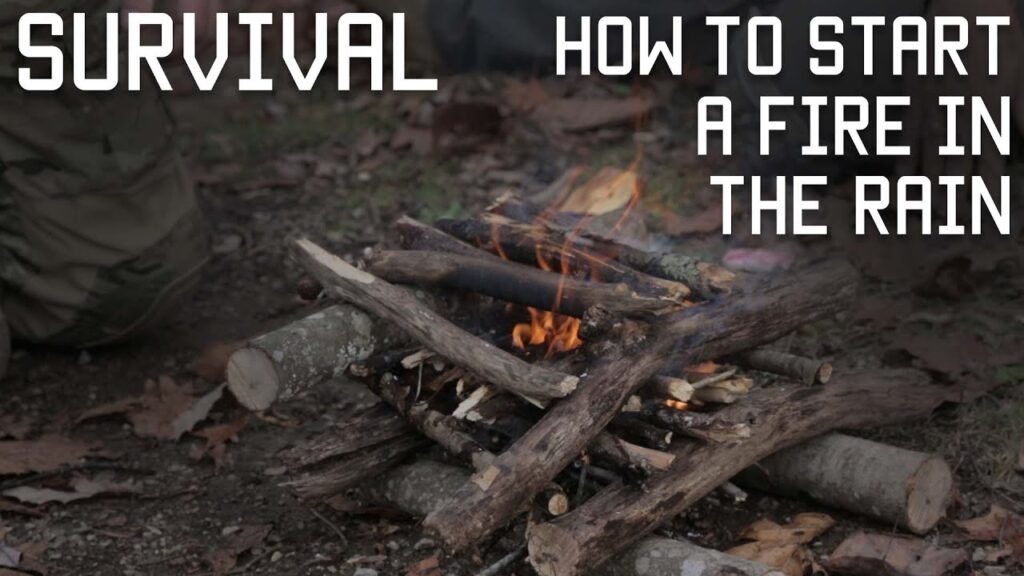Are you an outdoor enthusiast looking to learn how to start a survival fire? Look no further! With the help of 5.11 Tactical, you can acquire the essential skills to ignite a fire in even the most challenging conditions. In this article, we will explore the best techniques and tools provided by renowned brands such as Blackhawk, Gerber Gear, Leatherman, and many more. Whether you’re camping in the wilderness or facing an emergency situation, this comprehensive guide will equip you with the knowledge you need to confidently start a fire and keep yourself warm and safe.

Choosing the Right Firestarter
When it comes to starting a fire, having the right firestarter can make all the difference. There are several options available to choose from, each with its own advantages and disadvantages. Let’s take a look at some of the popular firestarter options.
Firestarter Options
Matches: Matches are a classic firestarter option. They are portable, affordable, and easy to use. However, matches can be affected by moisture, and they can run out quickly if not used carefully.
Lighter: Lighters are another popular choice for starting fires. They are portable, easy to use, and can produce a strong flame. However, lighters can also run out of fuel and may not perform well in windy or wet conditions.
Firestarter rods: Firestarter rods, also known as ferrocerium rods or firesteel, are excellent long-term firestarting tools. They produce sparks when struck with a metal striker, creating a shower of hot sparks that can ignite tinder. They are lightweight, durable, and work in most weather conditions.
Firestarter paste: Firestarter paste is a gel-like substance that is easy to apply to your firewood. It ignites easily and can help start a fire quickly. However, it can be messy to work with, and the paste itself may have a limited shelf life.
Considerations When Choosing a Firestarter
When choosing a firestarter, there are a few important factors to consider. These include the availability of the firestarter, its ease of use, its performance in different weather conditions, and its overall reliability.
You should also consider the purpose of the fire. If you are starting a fire for survival purposes, you will want a firestarter that is reliable, lightweight, and easy to use. On the other hand, if you are starting a fire for camping or recreational purposes, you may have more flexibility in your choice of firestarter.
Additionally, it may be beneficial to choose a firestarter that can be easily replenished or refilled, minimizing the need to constantly purchase new firestarters.
Preparing Your Fire Area
Before you can start a fire, it’s important to prepare your fire area properly. This involves selecting a safe location, clearing the area of any potential hazards, and gathering firewood.
Selecting a Safe Location
When choosing a location for your fire, safety should be your top priority. Look for an area that is clear of any overhanging branches or low-hanging foliage. Ensure that there are no flammable materials, such as dry leaves or grass, near the fire area.
It is also crucial to consider the wind direction when selecting a location. Choose an area that is sheltered from strong winds, as this can help prevent the fire from spreading uncontrollably.
Clearing the Area
Once you have selected your fire location, take the time to clear the area of any debris or potential fire hazards. Remove any dry leaves, twigs, or grass that could easily catch fire. Clear a circle approximately three feet in diameter around your fire area to ensure that sparks or embers do not ignite any nearby flammable materials.
Gathering Firewood
Gathering firewood is an essential step in preparing for a fire. Look for dry, dead branches and twigs that are no thicker than your thumb. These will serve as your kindling, helping to ignite the larger pieces of firewood.
It’s important to gather more firewood than you think you’ll need, as a fire can burn through wood quickly. Make sure to collect both small and larger pieces of firewood to keep the fire going once it’s started.
Building the Fire Structure
Building the structure of your fire is crucial for its success. The type of fire structure you choose will depend on your specific needs and the materials you have available.
Choosing the Right Fire Structure
There are several different fire structures you can choose from, each with its own advantages and purposes. Some common fire structures include the teepee, log cabin, and lean-to.
Teepee: The teepee fire structure consists of a cone-shaped arrangement of kindling and small branches leaning towards each other. This structure allows for good airflow and a strong flame, making it ideal for quickly boiling water or cooking food.
Log Cabin: The log cabin fire structure involves alternating layers of small branches or twigs, creating a stable base for larger logs to be placed on top. This structure is excellent for producing a long-lasting fire and can be easily adjusted by adding more logs as needed.
Lean-to: The lean-to fire structure is created by placing a long, sturdy log or rock as a support against a larger log. Kindling and small branches are then arranged against the support, allowing for efficient airflow. This structure is great for windy conditions as it provides good wind protection.
Preparing the Fire Bed
Before starting your fire, it’s essential to prepare a suitable fire bed. Clear away any debris from the area where the fire will be built, ensuring that it is level and free from any moisture. This will help prevent your fire from spreading and ensure that it burns efficiently.
You can also create a fire bed by using rocks or a fire pan as a base. This helps insulate the fire and reduces the risk of it spreading beyond the designated area.
Gathering Tinder and Kindling
Tinder and kindling are essential for successfully starting a fire. Tinder refers to the small, easily ignitable materials that will catch fire from the initial spark or flame. Kindling, on the other hand, refers to small branches or twigs that will be used to fuel the fire and gradually ignite the larger pieces of firewood.
Identifying Suitable Tinder
Suitable tinder materials can be found in nature or can be carried with you in a fire kit. Natural tinder options include dry grass, leaves, bark, pine needles, or even animal dung. These materials are highly flammable and can catch fire easily.
If you prefer to use commercially available tinder, there are various options to choose from, such as cotton balls dipped in petroleum jelly, firestarter sticks, or even char cloth. These options are lightweight and compact, making them ideal for survival situations.
Collecting Small Branches and Kindling
After gathering your tinder, it’s time to collect small branches and kindling. Look for dry twigs and branches that are about the thickness of a pencil. Snap or break these into shorter lengths, around six to twelve inches long, as this will make them easier to ignite.
Organize your kindling into different sizes, with the smallest pieces on the bottom and gradually increasing in size towards the top. This will help establish a good bed of coals and allow for a steady progression of flames.

Using 5.11 Tactical Tools for Fire Starting
When it comes to firestarting tools, 5.11 Tactical offers a range of high-quality options. These tools are designed to be durable, reliable, and easy to use in various survival and outdoor scenarios.
Recommended Tools from 5.11 Tactical
5.11 Ignitor Firestarter: This compact firestarter features a magnesium fire rod, a built-in striker, and a waterproof storage compartment. It is lightweight, easy to carry, and can generate sparks even in wet or windy conditions.
5.11 First Responder Pocket Tool: Although primarily designed for emergency medical use, this versatile tool includes a seatbelt cutter and oxygen wrench that can be used to assist in firestarting situations. Its compact size and multiple functions make it a valuable addition to any firestarting kit.
5.11 Fire Knife: This specially designed knife features a built-in fire starter rod stored in the handle. The high-quality stainless steel blade, combined with the firestarter rod, makes it a versatile tool for survival situations.
Using a Firestarter Tool
To use a firestarter tool from 5.11 Tactical, familiarize yourself with its features and functionality before heading into a survival situation. Practice striking the fire rod against the built-in striker, ensuring that you can produce a shower of hot sparks consistently.
When using the fire rod, hold it at a slight angle and place the striker near the rod’s base. Applying firm pressure, quickly slide the striker down the rod, creating a shower of sparks directed onto your tinder.
Remember to use caution when handling firestarting tools and to keep them away from children and flammable materials.
Starting the Fire
Now that you have all your materials and tools ready, it’s time to start the fire. Starting a fire can be a challenging task, but with the right technique and a bit of practice, you’ll be able to ignite a roaring fire in no time.
Preparing the Ignition Source
Before you start the fire, make sure you have your tinder, kindling, and larger firewood close at hand. This will prevent you from scrambling to gather materials once the fire is ignited.
Arrange your tinder in a small pile or nest, ensuring that there is plenty of airflow between the materials. This will help the flames grow quickly and ignite the kindling.
Using the Firestarter
Using your chosen firestarter tool, carefully aim the sparks into the tinder pile. Move the firestarter tool quickly and with force to produce a shower of sparks. Aim to land the sparks directly on the tinder, ensuring that they come into contact with the most flammable material available.
As the sparks ignite the tinder, be ready to blow gently on the flames to provide extra oxygen and help them grow. Gradually add more kindling, focusing on smaller pieces to establish a good base of burning embers.

Managing the Fire
Once the fire is started, it’s important to manage it properly to ensure that it continues to burn effectively and safely.
Adding Fuel to the Fire
To keep the fire going, add larger pieces of firewood gradually. Start with smaller logs and gradually increase the size as the fire grows stronger. Place the pieces perpendicular to the direction of the wind, allowing for proper airflow and combustion.
Maintaining the Fire
To maintain the fire, periodically stir the embers and shift the larger logs to allow for even burning. Keep an eye on the fire, ensuring that it doesn’t spread beyond the designated fire area. If necessary, use a fire poker or sturdy stick to rearrange the logs and increase airflow.
Remember to never leave the fire unattended and to always fully extinguish it before leaving the area.
Practicing Fire Safety
Fire safety should always be a top priority when starting and managing a fire. Here are some important safety measures to keep in mind.
Keeping a Fire Extinguisher Handy
Having a fire extinguisher nearby is essential for quickly extinguishing a fire in case of emergencies. Make sure it is easily accessible and that you know how to use it properly.
Managing Fire Risks
To minimize fire risks:
Never leave a fire unattended. Always monitor the fire and ensure that it is under control.
Keep a safe distance from the fire, especially if you have loose clothing or long hair. Sparks and embers can easily cause burns or ignite flammable materials.
Always fully extinguish the fire before leaving the area. Use water or a fire extinguisher to ensure that all flames and embers are completely extinguished.
Be aware of any fire restrictions or regulations in your area. Follow all rules and guidelines to prevent wildfires and maintain a safe environment.

Alternatives to 5.11 Tactical
While 5.11 Tactical offers reliable firestarting tools, there are also other reputable brands to consider. Some popular alternatives include:
Blackhawk: Known for their high-quality tactical gear, Blackhawk offers a range of firestarting tools that are designed for durability and performance.
Gerber Gear: Gerber Gear is a well-established brand that produces a variety of outdoor tools, including firestarters. They are known for their quality craftsmanship and reliable products.
Leatherman: Leatherman is renowned for its multi-tools, and many of their models include firestarting capabilities. These tools are versatile and ideal for outdoor enthusiasts.
Benchmade: Benchmade is recognized for its precision-crafted knives. Some of their models feature integrated firestarting rods, providing a practical and convenient option for fire starting.
Comparing Features and Performance
When comparing firestarter brands, consider factors such as durability, ease of use, and reliability. Read customer reviews, check product specifications, and compare prices to determine which brand and model best suit your needs.
Conclusion
Starting a fire can be a crucial skill in various situations, whether you’re out in the wilderness or facing an emergency. By choosing the right firestarter, preparing your fire area properly, and using the appropriate techniques, you can increase your chances of successfully starting and managing a fire.
Remember to prioritize safety at all times, follow fire safety practices, and be aware of any fire restrictions or regulations in your area. With the right tools and knowledge, you can confidently start a survival fire and enjoy the warmth and comfort it provides.

